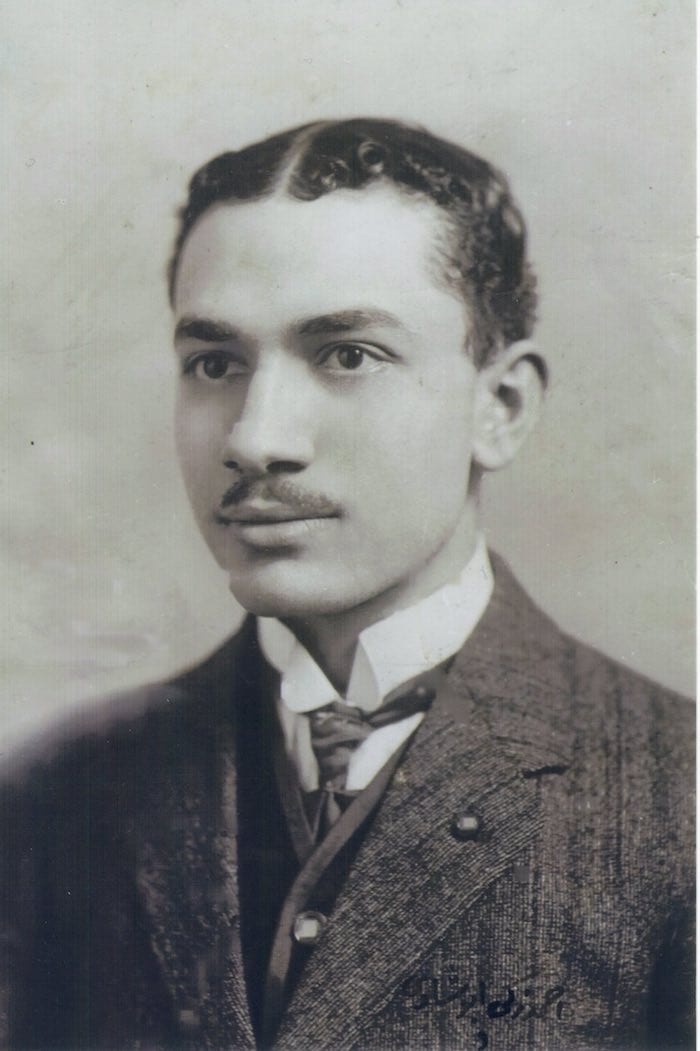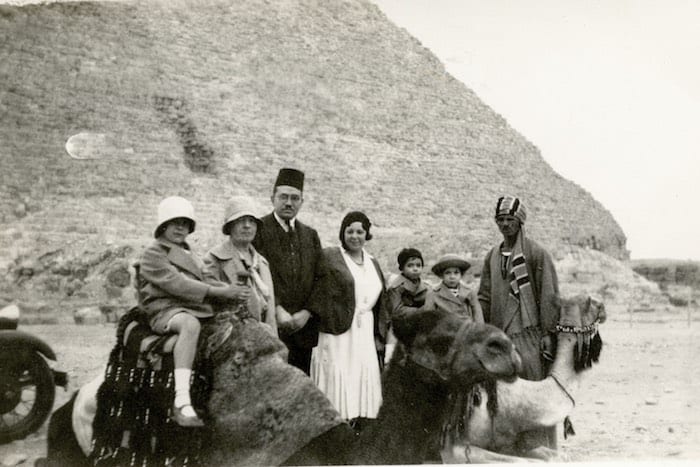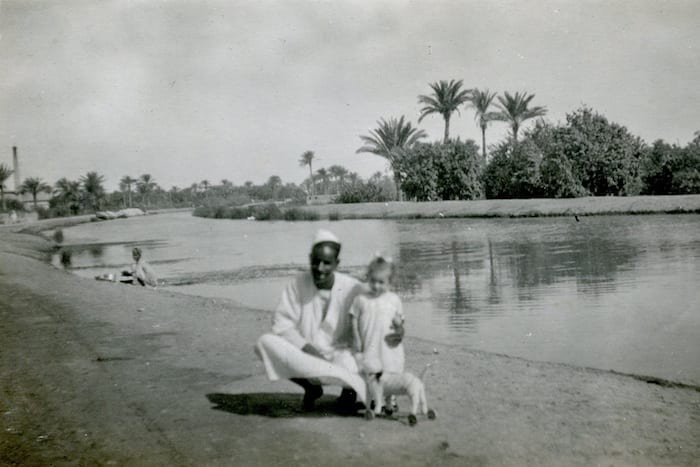The Egyptian photos, paintings, manuscripts and artifacts span almost 150 years
Image 1: The Abu Shadi family, at the pyramids at Giza, circa late 1920s-early 1930s | Image 2: Abu Shadi’s daughter, Safeya, with family servant, Suez, 1925
More than 40 boxes have arrived at the New York University Abu Dhabi (NYUAD), all of which contain unpublished manuscripts, and photographs, offer valuable insight into the life of the famous Egyptian poet, doctor and bee scientist Ahmed Zaki Abu Shadi, who lived from 1892-1955.
This arrival of the boxes is great news for NYUAD students and international researchers who will be able to access the information and works through the Archives and Special Collectons department of the NYUAD Library.
The 40 and more boxes contain correspondence, unpublished manuscripts, and photographs, as well as paintings and artifacts. The archive was acquired from Abu Shadi’s granddaughter, Joy Amina Garnett, earlier this year.
Abu Shadi was best known as a poet and founder of the literary journal Apollo, which was published in Cairo from 1932-1934, and for the group of poets affiliated with it.
As a young man, he spent a decade in Britain, where he studied medicine at the University of London and set up a medical practice, at the same time developing a lifelong interest in bees and beekeeping, co-founding the Apis Club and its journal, Bee World.
Returning to Egypt with his English wife Annie in 1922, the couple raised three children. Subsequently, the family immigrated to the United States, where Abu Shadi continued to write poetry and worked for the Voice of America, producing Arabic and English broadcasts on literary topics.
The Abu Shadi archival collection contains a rich selection of material documenting these activities, as well as papers from his daughter Safeya, who worked for the Saudi Embassy in Washington DC, as well as with the US Information Agency.




